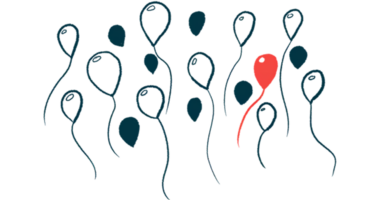Hemophilia treatment
Last updated Aug. 8, 2025, by Marisa Wexler, MS

Although no cure for hemophilia is currently available, a number of therapies can be used to control bleeding and other symptoms. These treatments can substantially increase life expectancy by lowering the risk of life-threatening complications, such as bleeding in the brain, especially in people with severe hemophilia.
Hemophilia is caused by the lack of certain clotting factors, which are proteins normally needed for blood to clot. Factor replacement therapies, which involve administering a working version of the missing clotting protein, have historically been considered the gold standard treatment for hemophilia. However, more recently, novel nonfactor therapies are increasingly being used to restore blood clotting in hemophilia.
Other medications that help the blood to clot may also be used in some cases. One-time gene therapies for hemophilia have also recently become available.
Factor replacement therapies
In hemophilia, certain blood clotting factors are dysfunctional or missing — specifically, factor VIII (FVIII) in the case of hemophilia type A, factor IX (FIX) in hemophilia type B, and factor XI (FXI) in hemophilia type C. Without a working version of these proteins, blood doesn’t clot properly, placing patients at an increased risk of excessive and prolonged bleeding.
Factor replacement therapies contain a working version of a clotting factor that can replace the missing protein in people with hemophilia types A or B. These treatments, which are administered intravenously, or directly into the bloodstream, may be given routinely as prophylaxis to prevent and lower the risk of bleeds, or used in an on-demand basis to control active bleeding episodes.
Available factor replacement therapies can be broadly divided into plasma-derived or recombinant therapies, depending on the origin of the clotting factor they contain.
Plasma-derived therapies
Some factor replacement therapies are plasma-derived, meaning they contain clotting factor proteins that are isolated from plasma — the noncellular component of blood — from people without hemophilia.
Approved plasma-derived therapies for hemophilia A include:
Approved plasma-derived therapies for hemophilia B include:
Recombinant therapies
Other factor replacement therapies contain recombinant, or lab-made, versions of clotting proteins. These therapies can be further subdivided into standard or extended half-life therapies, depending on the amount of time they remain in circulation in the body. Half-life refers to the time it takes for the levels of a medicine or a compound to drop to half of those originally administered; thus, the longer the half-life, the longer a therapy will remain in the body.
Standard half-life (SHL) recombinant therapies
Standard half-life, or SHL, recombinant therapies contain versions of clotting factors that are similar to the forms normally produced in people without hemophilia. Because naturally occurring clotting factors generally don’t last long in the bloodstream, these therapies usually need to be administered more often than extended half-life products.
Among the approved SHL recombinant therapies for hemophilia A are:
- Advate (octocog alfa)
- Kovaltry (octocog alfa)
- Novoeight (turoctocog alfa)
- Nuwiq (simoctocog alfa)
- Xyntha (moroctocog alfa).
Among the approved SHL recombinant therapies for hemophilia B are:
Additionally, the pig-derived recombinant factor replacement therapy Obizur (susoctocog alfa) is specifically approved for acquired hemophilia A.
Extended half-life (EHL) recombinant therapies
Extended half-life, or EHL, therapies contain versions of clotting factors that have undergone molecular modifications, such as albumin fusion, Fc fusion, PEGylation, XTENylation, or von Willebrand factor fusion. These modifications extend the time clotting proteins remain active in the body, allowing these therapies to be administered less frequently than standard half-life recombinant therapies.
Approved EHL therapies for hemophilia A include:
- Adynovate (rurioctocog alfa pegol)
- Afstyla (lonoctocog alfa)
- Altuviiio (efanesoctocog alfa)
- Eloctate (efmoroctocog alfa)
- Esperoct (turoctocog alfa pegol)
- Jivi (damoctocog alfa pegol).
Approved EHL treatments for hemophilia B include:
Nonfactor therapies
In addition to factor replacement therapies, other medications that promote blood clotting through mechanisms that do not involve replacing the missing clotting factors may be used to help prevent bleeding in hemophilia. Among these therapies are:
- Alhemo (concizumab-mtci)
- Hemlibra (emicizumab-kxwh)
- Hympavzi (marstacimab-hncq)
- Qfitlia (fitusiran).
Alhemo
Alhemo is an antibody-based therapy that promotes blood clotting by blocking the activity of a protein that normally interferes with the initial steps that lead to blood clotting. Administered via daily subcutaneous injections, Alhemo is approved in the U.S. to prevent or reduce the frequency of bleeding episodes in people with hemophilia A or B, ages 12 and older, with or without inhibitors.
Hemlibra
Also an antibody therapy, Hemlibra promotes blood clotting by mimicking the normal function of FVIII, the clotting protein that is missing in patients with hemophilia A. The therapy, which is given as an under-the-skin, or subcutaneous, injection, is approved in the U.S. to prevent or reduce the frequency of bleeding episodes in hemophilia A patients with or without inhibitors.
Hympavzi
Hympavzi is an antibody-based therapy that promotes blood clotting by blocking the activity of a protein that normally prevents the formation of blood clots. Administered via a once-weekly subcutaneous injection, Hympavzi is approved in the U.S. to prevent or reduce the frequency of bleeding episodes in people with hemophilia A or B, ages 12 and older, without inhibitors.
Qfitlia
Qfitlia is an RNA-based therapy that promotes blood clotting by limiting the production of antithrombin, a protein that inhibits multiple clotting factors. Administered via subcutaneous injections, Qfitlia is approved in the U.S. to prevent or reduce the frequency of bleeding episodes in people with hemophilia A or B, ages 12 and older, with or without inhibitors.
Bypassing agents
Although factor replacement therapies can be effective for controlling bleeds in hemophilia, sometimes the body’s immune system can mistake the delivered clotting factors for an infectious invader. When this happens, immune cells produce neutralizing antibodies, called inhibitors, that target those clotting factors, preventing them from working properly.
As the name suggests, bypassing agents are treatments that bypass the need for conventional clotting factor treatment by promoting blood clotting through mechanisms that aren’t dependent on the specific proteins that are missing or being targeted by inhibitors in people with hemophilia. For this reason, bypassing agents can be used as an alternative to conventional factor replacement therapies in patients who have developed inhibitors.
Bypassing agents approved in the U.S. for people with hemophilia A or B who have inhibitors include:
- FEIBA (factor eight inhibitor bypassing activity)
- NovoSeven RT (eptacog alfa [activated])
- Sevenfact (eptacog beta).
These medications, which are administered intravenously, may be used for rare acquired forms of hemophilia, where low factor levels are caused by an autoimmune reaction rather than a genetic mutation.
Gene therapy for hemophilia
Nearly all cases of hemophilia are caused by mutations in genes that provide instructions for making clotting factor proteins. The overarching idea behind gene therapy is to deliver a healthy version of the defective gene to the body’s cells, typically with the aid of certain viral vectors. This restores the body’s ability to produce its own functional clotting factor.
In hemophilia A, Roctavian (valoctocogene roxaparvovec-rvox) is a one-time gene therapy designed to deliver a shorter, but functional, version of the gene encoding FVIII to cells in the liver. It uses a harmless adeno-associated virus called AAV5. The gene therapy is administered via a single intravenous infusion and is currently approved in the U.S. for adults with severe hemophilia A who have no detectable AAV5 antibodies.
In hemophilia V, the gene therapy Hemgenix (etranacogene dezaparvovec-drlb) also uses the AAV5 viral vector to deliver a gene encoding a highly active form of FIX to liver cells. The therapy, given as a one-time intravenous infusion, was approved in the U.S. in late 2022 for people with hemophilia B who are on prophylaxis or have (or have had) life-threatening bleeds or repeated, serious spontaneous bleeding episodes.
Adjunctive and supportive therapies
There are also treatments that may be used as an add-on to other therapies or in specific circumstances. These adjunctive or supportive therapies can help manage bleeding episodes for shorter periods of time in people with hemophilia. Such therapies include:
- antifibrinolytics
- DDAVP (desmopressin acetate).
Antifibrinolytics
Antifibrinolytics are medications that stop blood clots from breaking down, thereby helping to prevent excessive bleeding. These medicines, including Cyklokapron (tranexamic acid) and aminocaproic acid, may be used to manage nosebleeds, bleeds related to dental work, or heavy menstrual periods in people with hemophilia and other bleeding disorders. Antifibrinolytics may be given orally or intravenously.
DDAVP
DDAVP contains desmopressin, an artificial form of a hormone naturally produced in the body that works by increasing the levels of certain clotting factors, including FVIII. It may be used to manage bleeds in people with mild or moderate hemophilia A. When used for this indication, DDAVP is administered via an intravenous infusion.
Fresh frozen plasma
Plasma has most of the proteins needed for blood clotting. Fresh frozen plasma was considered a mainstay treatment for hemophilia A and B in the 1950s and 1960s. This type of treatment had some disadvantages, however, including the fact that large amounts of plasma — containing small amounts of FVIII and FIX — had to be intravenously administered to patients to stop bleeds.
Since then, there’s been the development of cryoprecipitate, a plasma product made from fresh frozen plasma that contains more concentrated clotting proteins. Between that product and the subsequent availability of new therapies, the use of fresh frozen plasma has declined significantly.
It remains, however, one of the main methods to manage bleeding in people with hemophilia C in the U.S., given that FXI replacement therapies are not available in the country.
Hemophilia News Today is strictly a news and information website about the disease. It does not provide medical advice, diagnosis, or treatment. This content is not intended to be a substitute for professional medical advice, diagnosis, or treatment. Always seek the advice of your physician or other qualified health provider with any questions you may have regarding a medical condition. Never disregard professional medical advice or delay in seeking it because of something you have read on this website.
Recent Posts
Related articles






